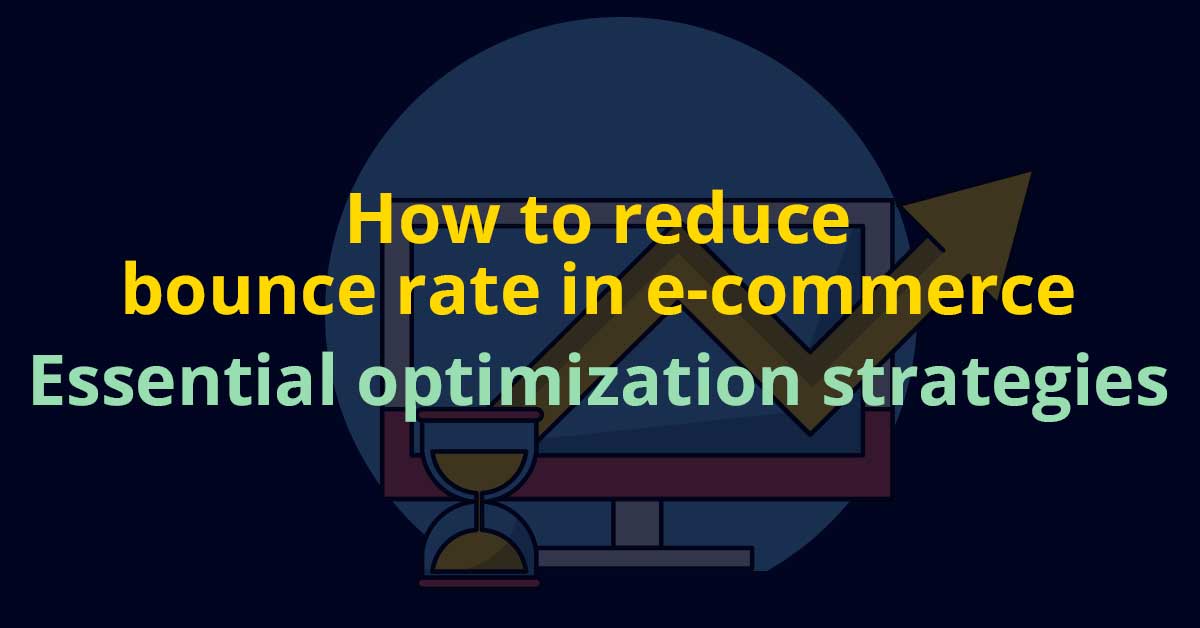Understanding the nuances of website traffic, user behavior, and conversion metrics is crucial in the competitive world of e-commerce. One of the most significant metrics that can indicate the health of an e-commerce website is the bounce rate. In this article, I’ll explain what bounce rate is, why it matters, how it can be reduced, and the tools necessary to measure and improve it effectively.
What is the bounce rate?
Definition and importance of bounce rate
The bounce rate is the percentage of visitors who navigate away from a site after viewing only one page. In the context of e-commerce, a high bounce rate can be a sign of several potential issues, ranging from poor site design to inadequate content relevancy. Understanding this metric helps businesses identify and rectify issues that may be hindering customer engagement and retention.
The impact of bounce rate on E-commerce
A high bounce rate often indicates that site entrance pages aren’t relevant to your visitors. For e-commerce, this could mean lost sales and decreased conversions, making it essential to understand and optimize these rates.
Causes of high bounce rates
Poor user experience can lead to a high bounce rate
A significant factor contributing to a high bounce rate is poor user experience, which can include complicated navigation, slow load times, unattractive layout, or non-responsive design. Each of these factors can quickly deter a visitor from staying longer on your site.
Ineffective content strategy on your website
If the content on the landing page isn’t aligned with the visitors’ expectations or search queries, they are likely to leave the site. The relevance and quality of content are critical in retaining visitors.
Technical issues on your website that can affect the bounce rate
Technical setbacks like broken links, error pages, or outdated technology can dramatically increase your bounce rate. Ensuring your site is technically optimized is crucial for keeping your bounce rate low.
Strategies to reduce bounce rate
Enhancing user experience
Improving user experience involves creating a responsive design that works on desktop and mobile devices, enhancing site speed, and making navigation intuitive and straightforward. Tools like Google’s PageSpeed Insights can be used to analyze and optimize site performance.
Content optimization
Developing content that engages and meets the expectations of your target audience can significantly reduce bounce rates. This includes writing compelling copy, using high-quality images, and offering clear calls to action.
A/B Testing
Regularly testing different elements of your landing pages can help determine what works best for your audience. A/B testing can involve experimenting with different layouts, content, and calls to action to see which variants produce the lowest bounce rate.
Tools for measuring bounce rate
Google Analytics Google Analytics is the most widely used tool for tracking bounce rate. It provides detailed insights into how different pages perform, allowing you to make data-driven decisions to optimize your pages.
Heatmaps and session replay tools
Heatmaps show where users are clicking, while session replay tools allow you to observe how visitors navigate your site.
Conversion rate optimization (CRO) tools
CRO tools offer necessary testing capabilities that not only help reduce bounce rates but also improve the overall conversion rate of your site.
Evaluating the success of your website
Setting realistic goals
When working to reduce bounce rates, it’s essential to set realistic and specific goals. What constitutes a “good” bounce rate can vary widely depending on your industry and the specific type of e-commerce site.
Monitoring changes and results
It is crucial to regularly monitor and analyze how adjustments affect your bounce rate. This ongoing process will help you fine-tune your site and marketing strategies for optimal performance.
Using feedback for continuous improvement
Collecting user feedback can provide actionable insights into why visitors might be bouncing. Tools that allow user feedback collection can be invaluable in this continuous improvement cycle of your company’s website.
Conclusion on how you can reduce the bounce rate
Reducing bounce rates is a crucial component of optimizing an e-commerce site for better user engagement, retention, and conversion. Businesses can significantly enhance their site’s effectiveness and profitability by understanding the reasons behind high bounce rates and implementing targeted strategies to address them. Remember, the goal is to provide a seamless, engaging, and rewarding experience that encourages visitors not only to stay longer but also to convert into paying customers.

